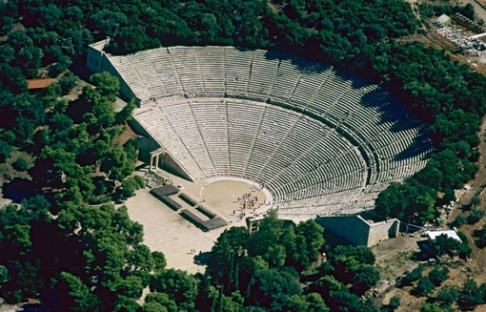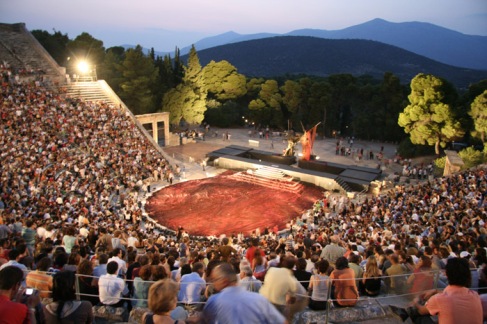Starting in the 5th cen. BCE theaters became prominent part of the Greece community; it was a key to their culture and city layout. The predecessors of theatrical drama were the temples to the gods, in many cases the pediment statues told stories of the gods or of the Greeks. The stories were of significance to the local community but also to the rest of Greece as well, in a panhellenic sense.
At its birth Athenian theatre was not a grand social event, nor was it entertainment for when citizens had time; it was an all day affair. The crowds of viewers were massive, around 14,000, and would sit through multiple plays in a row. This was a competition of sorts between playwrights with prizes and rewards set aside for those with the best audience responses. (One might liken this to a more large scale version of College Night here on campus.)
On top of the plays, audiences were subject to civic functions from the city. Since the theaters were built with public funds functions of the local government were held here.
The origins of the architectural theater used by the Greeks is unknown, but based upon design we have been able to gather that the actions of the cult of Dionysus directly correlates to the shape and features. The area where the action took place was known as the “orkhestra,” the base for the modern word orchestra. It was a circular, or semi-circular, flat area that was empty, except for an altar. This type of space is similar to that of a threshing floor which many scholars believe reveals the connection between theatre and the cult of Dionysus. The round shape of the the theater allowed each person to be on equal in terms of view of the production; this is best shown at Epidaurous.



